
If you're someone who loves the great outdoors and is looking for a unique camping experience, you might have come across the terms "bell tent" and "yurt." While both offer a distinctive and comfortable alternative to traditional camping, there are some key differences between the two. Let's explore what sets them apart!
A bell tent is a type of tent that has a distinctive shape, similar to a bell. It is characterized by its high, central pole and sloping sides. These tents are typically made from breathable canvas or polyester fabric, allowing for good ventilation while keeping you protected from the elements. The bell tent is known for its spacious interior, allowing for comfortable living and sleeping quarters. It offers a cozy and romantic atmosphere, making it a popular choice for glamping (glamorous camping) enthusiasts.
One of the main advantages of a bell tent is its ease of setup. With just a few poles and stakes, you can have your bell tent ready in no time. It is also relatively lightweight and portable, making it convenient for camping trips or events. Bell tents often come with additional features such as a groundsheet, mesh windows for ventilation, and a stove jack for safely using a wood-burning stove or heater.
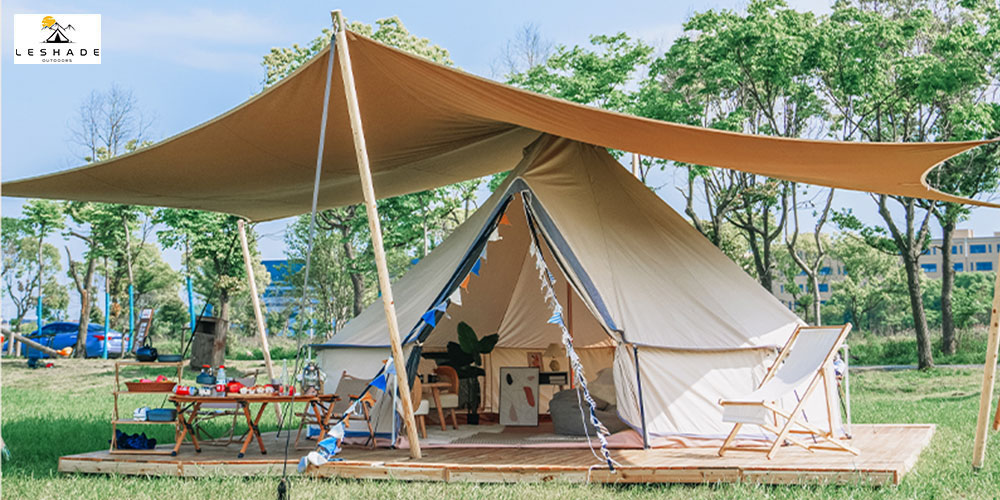
A yurt, on the other hand, is a traditional, portable dwelling that originated in Central Asia. It consists of a circular framework made of wood or metal and is covered with a durable fabric such as felt or canvas. Unlike a bell tent, a yurt has a rigid structure and is freestanding, meaning it doesn't require any additional supporting poles.
Yurts are known for their excellent insulation and weatherproofing capabilities. The design allows for natural airflow and minimal heat loss, keeping the interior cool in summer and warm in winter. Traditionally designed with intricate patterns and colorful decorations, yurts offer a unique aesthetic that many find appealing.
Yurts are often larger in size compared to bell tents, providing ample space for various purposes. They can accommodate furnishings such as beds, furniture, and even a small kitchenette. While they require more effort and time to set up compared to bell tents, their sturdy construction makes them suitable for long-term or semi-permanent installations.
In conclusion, both bell tents and yurts offer a comfortable and distinctive camping experience. The choice between the two depends on personal preference, desired features, and the level of convenience you are looking for. Whether you prefer the cozy elegance of a bell tent or the traditional allure of a yurt, both options allow you to enjoy the great outdoors in style and comfort.
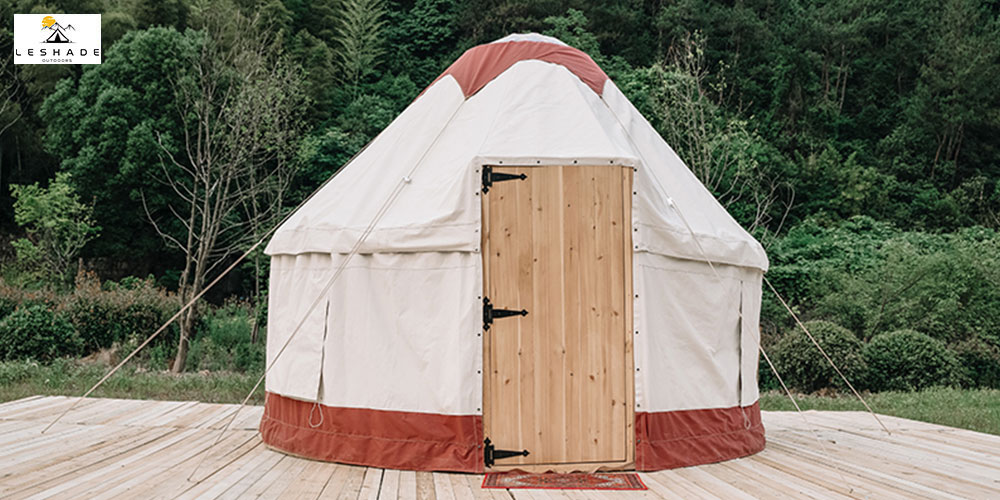
A bell tent is a type of tent that is characterized by its distinctive shape and structure. It is named after its bell-like shape, with a high central pole and sloping walls. Bell tents are typically made of canvas or a similar heavy-duty fabric that is waterproof and durable. They are supported by a central pole and often have a secondary frame or guy lines for added stability. The design of a bell tent allows for ample interior space and headroom, making it comfortable and practical for camping or outdoor events.
Bell tents often have additional features that enhance their functionality and comfort. They may come with removable ground sheets, allowing for easy cleaning and customization of the tent's interior. Some bell tents also have multiple doors and windows, providing excellent ventilation and natural light. Additionally, they can be equipped with stove jacks for safe and efficient heating during colder weather conditions.
A yurt is a traditional structure that originated in central Asia and has been used by nomadic communities for centuries. It consists of a circular wooden frame that is covered with various layers of fabric, such as felt or canvas. The design of a yurt is highly efficient and durable, capable of withstanding harsh weather conditions.
Yurts have a unique shape and structure, with a central roof ring that supports the layers of fabric and creates a spacious interior. The walls of a yurt are typically insulated, providing excellent heat retention during colder seasons and keeping the interior cool in warmer weather. Yurts often have a dome-shaped opening at the top, known as the crown or sky opening, which allows for natural light and ventilation.
Yurts are known for their versatility and can be easily customized to fit different needs. They can be equipped with wood-burning stoves for heating and cooking, as well as furniture and other amenities to create a comfortable living space. Some yurts are designed for long-term habitation and can include features like insulation, electricity, and plumbing.
In summary, while both bell tents and yurts offer unique and attractive features, they differ in design and structure. Bell tents have a distinctive bell shape, with a central pole and sloping walls, while yurts have a circular wooden frame and layers of fabric. Both options provide comfortable and practical accommodations for camping or outdoor events, but the choice ultimately depends on personal preference and specific needs.
Setting up a bell tent is relatively easy and does not require a lot of time or effort. These tents are designed to be simple and quick to assemble, making them a popular choice for camping trips and outdoor events. The poles are usually made of lightweight materials such as aluminum or fiberglass, allowing for easy transportation and setup. Bell tents typically have a central pole and a few additional supporting poles around the perimeter to create a stable structure. They are often freestanding and do not require stakes or guy lines, making them convenient for various terrains.
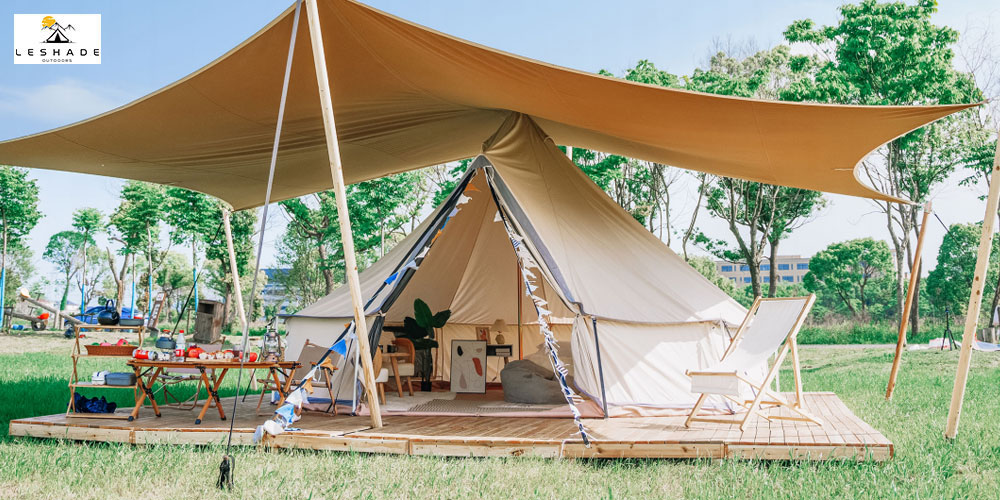
Setting up a yurt, on the other hand, requires more time and effort compared to a bell tent. Yurts have a more complex structure, with a framework made of wooden lattices and a supported roof structure. The walls are typically made of canvas or other durable materials. Building a yurt involves connecting the lattice walls, installing a central support beam, and attaching the roof coverings. This process can take several hours and may require multiple people to complete. Due to their size and weight, yurts are not as portable as bell tents. They are typically more suitable for semi-permanent or permanent setups.
When it comes to portability, bell tents are the clear winner. They are lightweight, easy to transport, and can be set up quickly without much hassle. They are perfect for those who want a portable and hassle-free camping experience. Yurts, on the other hand, are more suitable for those who prefer a more permanent or semi-permanent shelter. They are not as easily transportable and are better suited for longer stays or more established camping sites.
In conclusion, the main difference between a bell tent and a yurt lies in their setup and portability. Bell tents are easy to set up, lightweight, and perfect for portable camping experiences. Yurts, on the other hand, require more time and effort to set up and are better suited for semi-permanent or permanent campsites. Consider your needs and preferences when choosing between a bell tent and a yurt for your outdoor adventures.
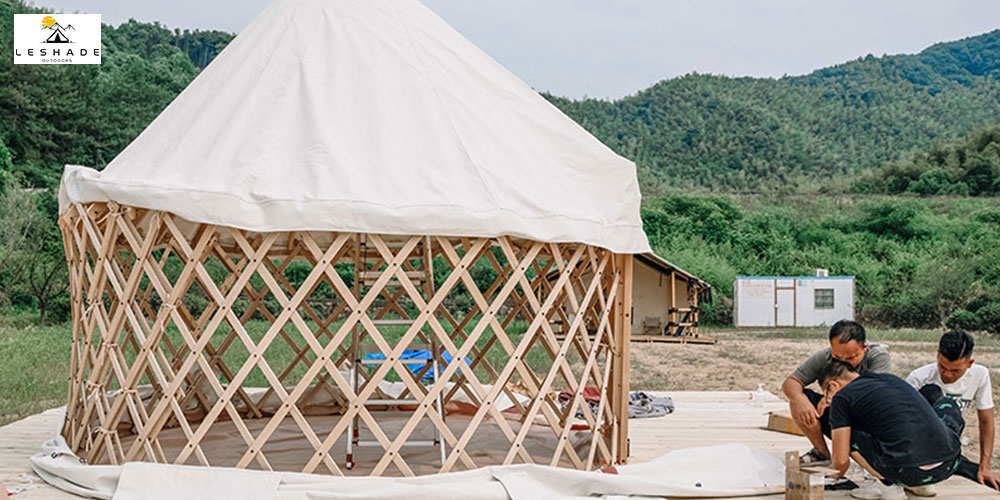
A bell tent is a popular choice for outdoor enthusiasts looking for a comfortable and functional camping experience. These tents are known for their spaciousness and versatility, making them an excellent option for both solo travelers and families alike. Some key comfort features of a bell tent include:
Bell tents are designed with a high center pole, allowing for a generous amount of headroom and plenty of space to move around. This makes them ideal for those who value comfort and want to avoid feeling cramped in a tent.
Bell tents often come with multiple windows and vents that provide excellent air circulation. This helps to regulate the temperature inside the tent and prevent condensation, ensuring a comfortable and dry sleeping environment.
Bell tents can be customized with various accessories to enhance comfort. Adding a thick groundsheet or a soft rug can provide insulation from the ground and create a cozy atmosphere. Additionally, adding comfortable bedding and pillows can make for a good night's sleep.
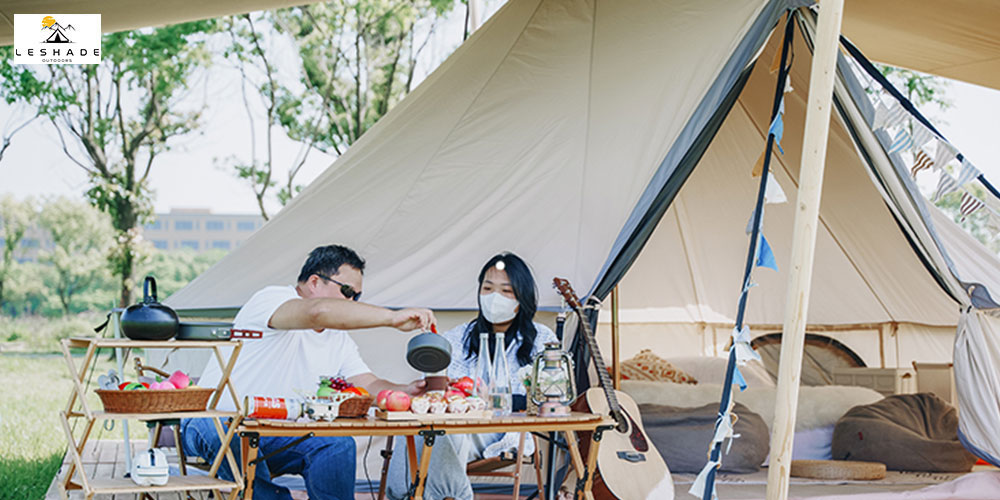
Yurts, traditional dwellings originating from Central Asia, have gained popularity as unique and comfortable accommodations. These round structures offer a blend of simplicity, sustainability, and comfort. Some comfort features of a yurt include:
Yurts are known for their expansive interior space and towering ceiling height, providing a feeling of openness and freedom. This makes them suitable for both living and recreational purposes.
The circular design of yurts allows for plenty of natural light to flood in through the central roof opening known as the "crown." This creates a bright and inviting atmosphere during the day.
Yurts are built with insulation in mind, often using materials such as thick canvas or felt to keep the interior warm in cool weather and cool in hot weather. This allows for comfortable year-round living or camping experiences.
Yurts can be customized with various amenities to enhance comfort. These can include comfortable bedding, heating options, and even furniture to create a cozy and personalized living space.
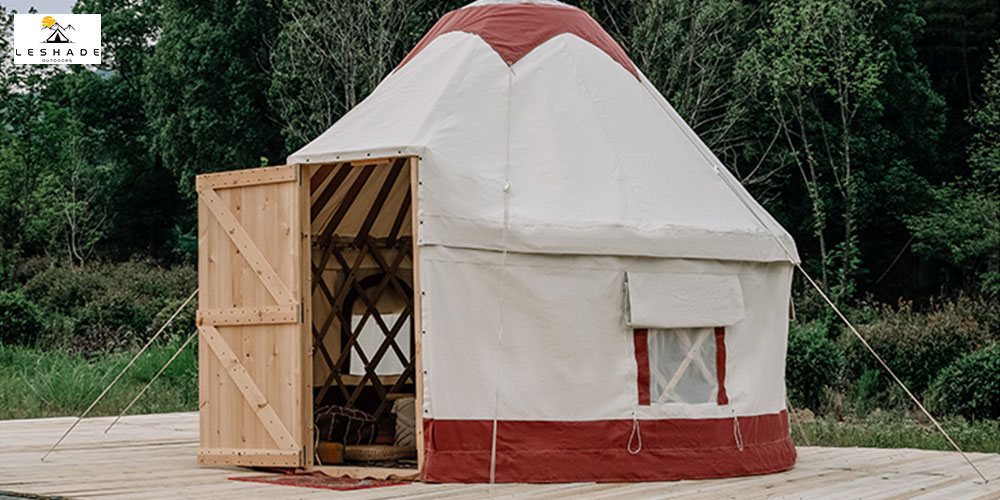
While both bell tents and yurts offer comfort, the choice ultimately depends on personal preferences and specific needs. Bell tents provide a more portable and versatile option, while yurts offer a more permanent and spacious living space. Whether camping or looking for a unique accommodation experience, both options can provide a comfortable and unforgettable stay.
When it comes to alternative accommodation options for outdoor adventures, bell tents and yurts have gained popularity in recent years. While both options provide a unique experience, there are some key differences to consider. Let's explore how these structures can be used and adapted to suit different needs.
A bell tent is a lightweight and portable structure that is easily set up and taken down. It is commonly used for camping trips and festivals, providing a comfortable and spacious living area. Bell tents can accommodate multiple people and are often equipped with various features, including windows, a central pole for height, and ventilation options for airflow. This versatility allows for customization and the addition of furniture and accessories to create a cozy and personalized space.
Additionally, bell tents can be adapted for different seasons. With the use of a stove or heater, they can provide warmth during colder months, making them suitable for camping trips even in cooler climates. They are also waterproof and can withstand various weather conditions, ensuring a dry and secure shelter during rain showers.
Yurts, on the other hand, are more permanent structures that offer a larger living space. Originating from Central Asia, they have been used for centuries by nomadic communities. Today, yurts are commonly used as eco-friendly or glamping accommodations, providing a unique and luxurious camping experience.
The circular shape of a yurt allows for open and spacious interiors. They often feature multiple windows and a skylight, providing ample natural light and ventilation. Yurts can be fully furnished with beds, seating areas, and even kitchen facilities, offering a comfortable and home-like environment.
One of the advantages of yurts is their adaptability. They can be insulated for use during colder seasons, making them suitable for year-round camping and outdoor living. Some yurts are also equipped with additional features such as solar power systems and composting toilets, allowing for a sustainable and off-grid experience.
In summary, while bell tents are more portable and versatile for camping trips and festivals, yurts offer a larger and more permanent accommodation option with added amenities. The choice between a bell tent and a yurt ultimately depends on the desired level of comfort, the duration of stay, and the specific needs of the outdoor adventure.
Related news
The Structural Marvels of Tents
2023-10-08
When it comes to outdoor adventures, the first thing that often comes to mind is the trusty tent.
But have you ever wondered about the incredible engineering that goes into making these portable shelters, especially when it comes to facing the forces of nature head-on?
Let's explore the fascinating world of tent engineering together!
Canvas Wall Tent: Versatile Comfort for Every Camper
2023-10-08
Are you ready to embark on a memorable outdoor adventure? Look no further than our Canvas Wall Tent, a perfect companion for camping enthusiasts seeking both comfort and durability. Crafted with the finest materials and designed for ultimate convenience, this tent is your ticket to a remarkable camping experience. Join us as we delve into the features and benefits of our top-quality Canvas Wall Tent.
Discover Unforgettable Adventures with Our Triangular Camping Tent
2023-10-08
Are you ready to revolutionize your camping experience? Look no further than our Triangular Camping Tent, a groundbreaking solution that combines innovation, comfort, and convenience. Crafted with precision and designed for ultimate outdoor exploration, this unique tent is your gateway to unforgettable adventures. Join us as we explore the remarkable features and benefits of our top-of-the-line Triangular Camping Tent.
Why Choose Canvas Camping Tents
2023-10-08
In a world dominated by modern technology, canvas camping tents offer a refreshing escape to simpler times. Their enduring appeal, comfort, and ability to forge a genuine connection with nature make them an excellent choice for adventurous souls seeking a more immersive outdoor experience.
Related products
Having one brands:“Leshade”.
View All